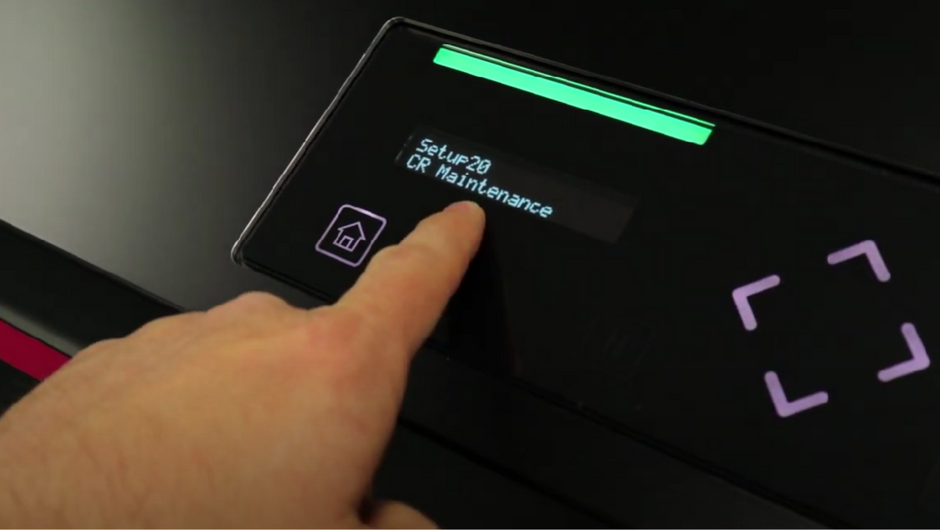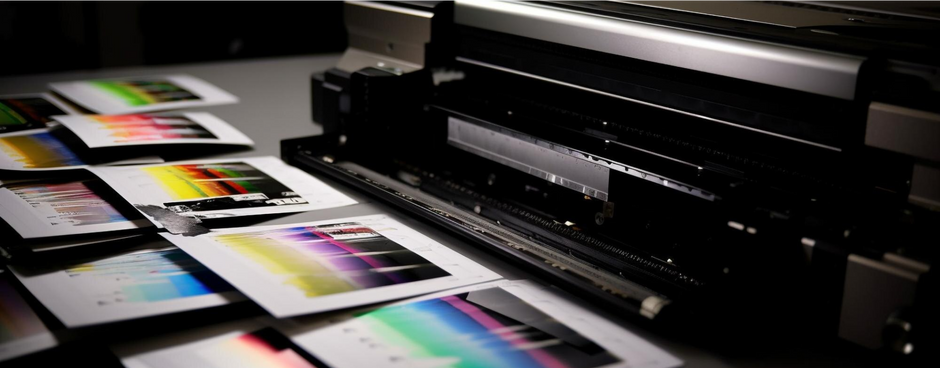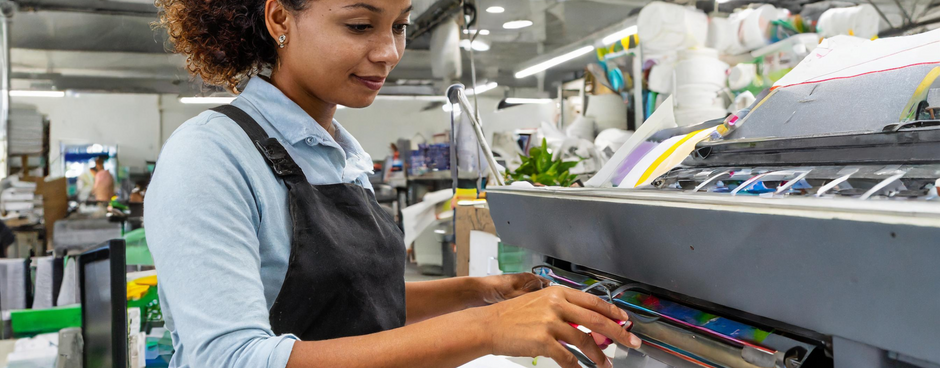Minimizing waste and maximizing savings in printing operations are crucial for business efficiency and sustainability. By reducing paper, ink, and energy consumption, your business can lower costs, minimize environmental impact, and enhance its profitability while contributing to a greener future.
In wide-format printing, minimizing waste and maximizing savings requires specific strategies tailored to the unique characteristics of large-scale printing. Here are some practical techniques to achieve these goals:
- Optimize File Preparation:
Optimizing file preparation in printing operations minimizes waste and maximizes savings. Properly formatted files reduce errors, minimize reprints, and ensure efficient use of materials, ultimately lowering costs and improving productivity. Here are some tips to achieve this:
- Ensure files are properly optimized for wide format printing to minimize ink or toner usage and reduce processing time.
- Use vector graphics whenever possible to maintain scalability without sacrificing print quality.
- Flatten layers and simplify complex designs to reduce processing requirements and minimize file sizes.
- Choose Suitable Materials:
Choosing suitable materials can minimize waste and maximize savings in your printing operations. For example: by selecting eco-friendly substrates, businesses reduce excess material, minimize disposal costs, and promote sustainability in their printing practices. Here are other recommendations:
- Select appropriate substrates and materials based on the specific requirements of each print job.
- Choose eco-friendly and recyclable materials to minimize environmental impact and reduce waste.
- Consider the durability and longevity of materials to avoid premature replacement or reprinting.
- Implement Efficient Printing Practices:
Your printing practices matter if you want to minimize waste and maximize savings in your printing process. By optimizing your print settings, scheduling jobs effectively, and using duplex printing, your business could reduce paper and ink consumption while improving productivity and cost efficiency. Here are some tips to help you:
- Group similar print jobs together to maximize efficiency and reduce setup and changeover times.
- Use nesting software to optimize the placement of designs on print media and minimize material waste.
- Adjust print settings such as resolution and color profiles to achieve the desired quality while minimizing ink or toner usage.
- Utilize Waste Reduction Features:
Modern digital printers have a lot of great features to make your printing process more efficient and profitable. Features such as automatic double-sided printing and ink-saving modes reduce material usage, lowering costs and environmental impact. We recommend:
- Take advantage of features such as ink-saving modes, automatic color calibration, and ink recirculation systems available in modern wide-format printers.
- Implement software tools for color management and ink optimization to ensure accurate color reproduction while minimizing ink consumption.
- Embrace Digital Workflows:
Another great way to save and optimize your printing operations is by embracing digital workflows. For example: Digital processes streamline file management, reduce paper usage, and enhance efficiency, leading to cost savings and environmental benefits. You can:
- Encourage digital proofing and approval processes to reduce the need for physical proofs and minimize waste.
- Utilize web-to-print solutions to streamline order processing and reduce manual intervention in the printing workflow.
- Invest in Automated Finishing Equipment:
Automation is here to make our life easier and our business more efficient, helping us to save time and cost. Maybe, investing in an automated system or machine means a higher initial investment, but eventually, it will pay off the effort. To optimize your printing operations you can:
- Automate cutting, trimming, and finishing processes to minimize material waste and improve production efficiency.
- Consider investing in digital cutting tables or routers that can precisely cut printed materials without the need for manual intervention.
- Monitor and Analyze Usage:
Monitoring and analyzing usage is another way to minimize waste and maximize savings in your business. By tracking print volumes and patterns, businesses identify inefficiencies, optimize resources, and reduce unnecessary printing, saving costs. We recommend:
- Track printing usage and analyze material consumption to identify opportunities for waste reduction and cost savings.
- Implement job tracking and reporting tools to gain insights into printing patterns and optimize resource allocation.
- Train Staff and Promote Awareness:
Invest in your people. Educated employees adopt sustainable practices, such as print optimization and paperless workflows, which will lead to reduced costs and environmental impact. Some tips are:
- Provide training to staff on efficient printing practices, including file preparation, material handling, and equipment operation.
- Raise awareness among employees about the importance of waste reduction and cost savings in wide-format printing operations.
- Regular Maintenance and Calibration:
By ensuring equipment operates at peak efficiency, businesses reduce downtime, prevent errors, and prolong the lifespan of printing assets. So we recommend:
- Perform regular maintenance and calibration of wide format printers to ensure optimal performance and print quality.
- Clean print heads, replace worn parts, and calibrate color profiles to prevent costly reprints and ensure consistent results.
- Explore Sustainable Options:
Sustainable options minimize waste and maximize savings in printing operations. Choosing eco-friendly materials, such as recycled paper and biodegradable inks, reduces environmental impact while lowering production costs.
- Consider alternative printing technologies such as eco-solvent or UV-curable inks that offer lower environmental impact and reduced waste generation.
- Partner with suppliers that offer environmentally friendly substrates and printing materials to support sustainable printing practices.
If you consider and implement these practical techniques, your business will be able to minimize waste, optimize resource utilization, and maximize savings while maintaining high-quality output and environmental responsibility.







